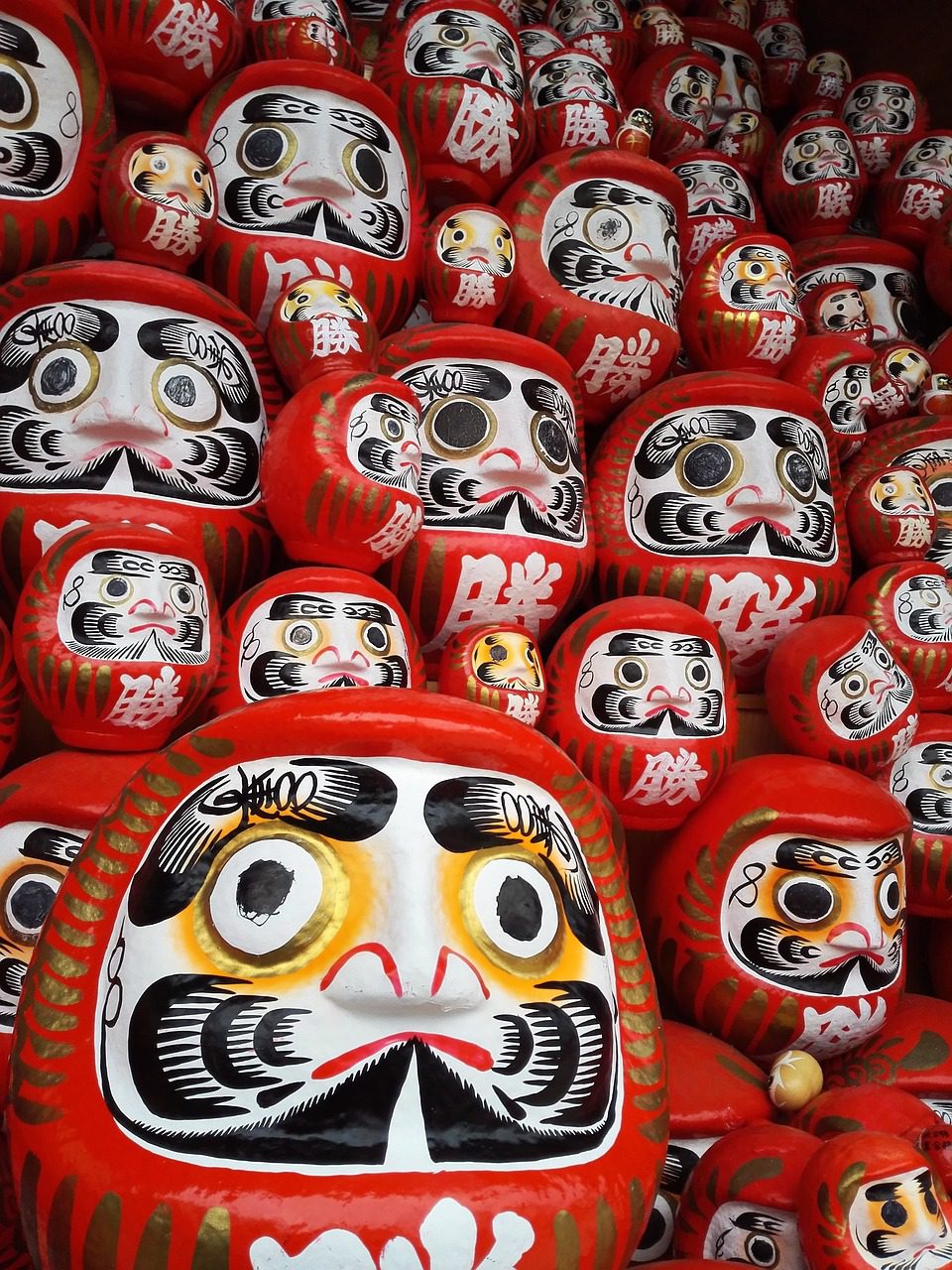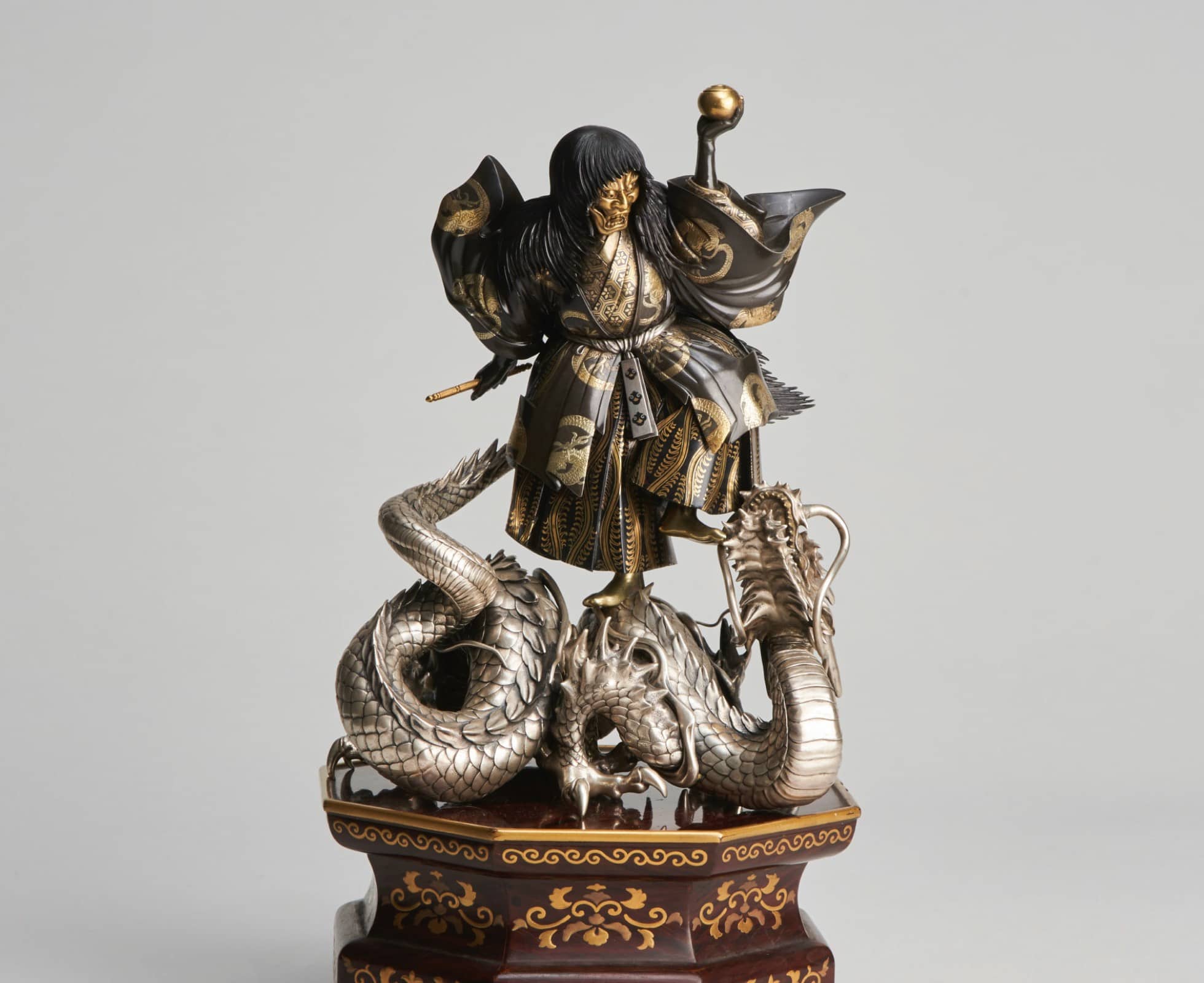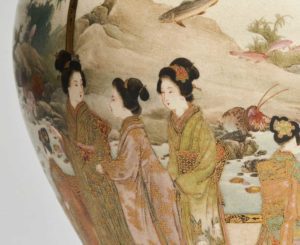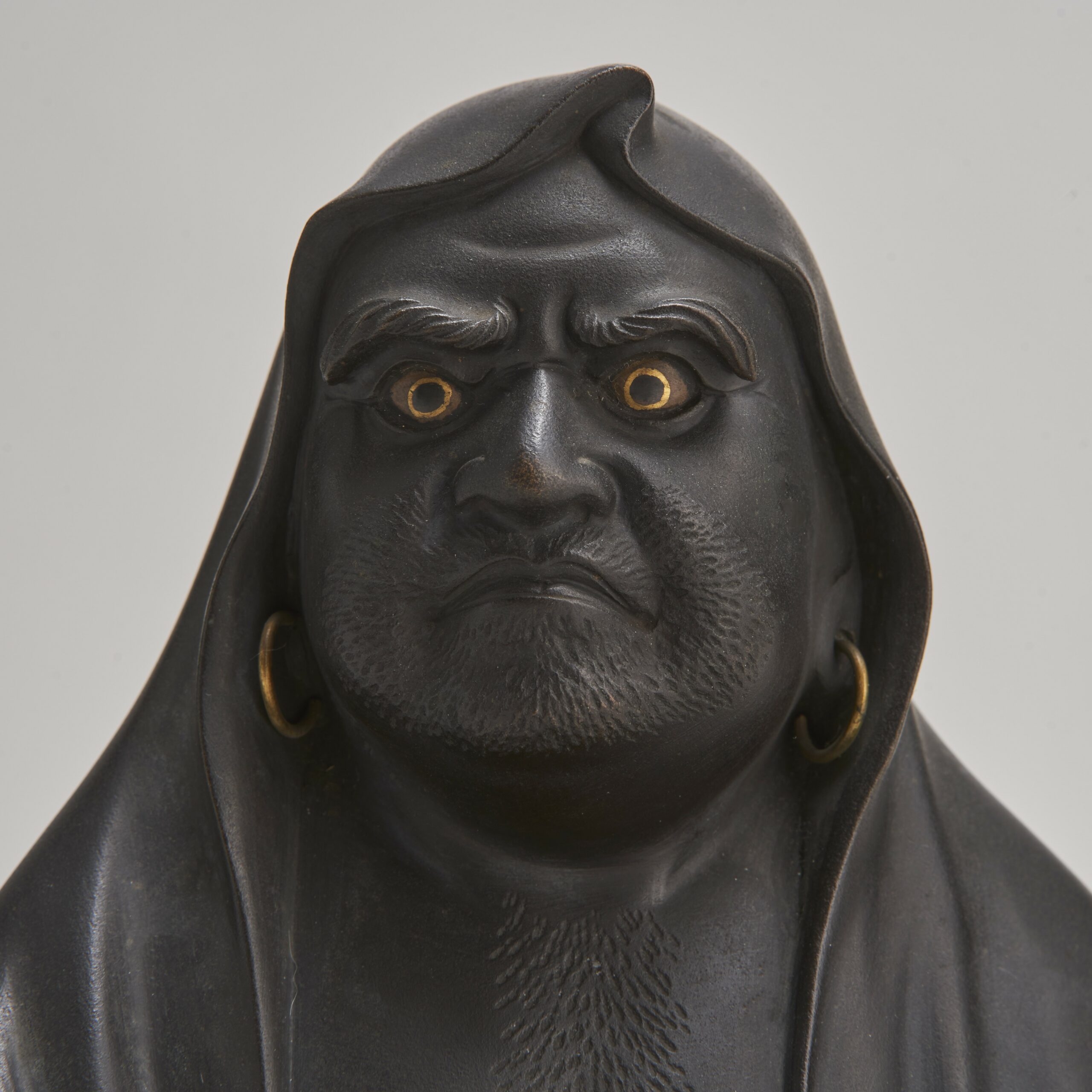One of the most popular characters in Japanese legend, it is widely believed that Daruma was an Indian Monk who lived during the 5th or 6th Century. Known as Bodhi Dharma in India and Ta-Mo in China, he is credited with bringing Zen Buddhism to China and is the first of Six Chinese Patriarchs of the Buddhist faith.
Bodhi Dharma was the son of one of the Kings of Southern India. He studied Buddhism under the tuition of the legendary female master Prajnatara and became a missionary to China where he arrived around 520AD. (Click on any of the images below to take a closer look at this powerful Bronze Okimono of Daruma.)
There is some evidence that Bodhi Dharma was a real person but as is often the case with religious figureheads, his legend has been embellished and exaggerated in the Centuries that have passed. One such fable is that he arrived in Canton and made his way along the Yangtze River on top of a reed that he had pulled from the river-bed. When he arrived at the capital (Lo Yang), he stayed at the Shao-lin Temple which was birth place to the famous form of Kung-Fu practiced by the resident monks. Lo Yang was a popular city for missionaries.
Bodhi Dharma is believed to have spent nine long years at the temple, meditating in a cave under the Wuru Peak. Legend has it that he sad in silence and abstraction, distancing himself from all world affairs. Many of the legends associated with Daruma centre around this meditation.
It is said that this long vigil caused him to lose the use of his legs. Various stories have his limbs wasting away causing paralysis or rotting away while he meditated and then being consumed by rats. Because of this, he is often depicted seated in robes that cover him from head to toe with only his face visible.
One of the most bizarre legends around Bodhi Dharma is that he fell asleep around seven years into his nine year meditation. He became so angry with himself that he cut off his eyelids so that he would never sleep again. The legend goes on that where his eyelids hit the floor, the first tea plants grew and these would provide stimulae to help keep his students awake. In both China and Japan, this is one of the most popular origin stories of the tea plant.
In China it is claimed that when Bodhi Dharam died, he was buried at Hsuing Erh (The Bears Hill) and that three years after his death, he was seen travelling over the mountains back to his homeland of India with one bare foot. These claims caused a stir in China and the Emperor decreed that his tomb be opened. Upon opening the tomb it was found to be empty apart from a single shoe. In many depictions of Bodhi Dharma, he is shown walking and carrying one shoe.
The Japanese claim that Bodhi Dharma visited Japan in 613AD, crossing the water once more on his magical reed. He is said to have taken up residence on Mount Kataoka before passing away.
Chinese depictions of Bodhi Dharma in art and literature are treated a lot more respectful than in Japanese culture where he is often seen as a humorous caricature often with a bizarre, distorted expression on his face and even with rats nibbling on his toes. He is sometimes shown entangling himself in cobwebs or stretching as if awakening after a long sleep. Despite these comical depictions, he is hugely popular in Japan and the Daruma doll is a good luck talisman, especially enjoyed by babies and infants. Snowmen are known as “Yukidaruma” in Japan which means “Snow Daruma”. Yukidaruma are comprised of one or two balls representing Daruma meditating and bundled up in his robes.

We hope you enjoyed this article. You can read more of our blogs and stories inspired by our collection of Chinese and Japanese Fine Art and Antiques by clicking here.









